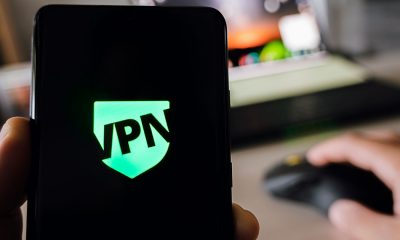Business
My Honest Review of Flocksy’s Unlimited Creative Services
Published
4 years agoon

Flocksy stands out as one of the top competitors in the unlimited graphic design space. I breakdown all there is to know about the service. After this review, you’ll have a better understanding of whether Flocksy is the best design option for your business.
Flocksy Overview
Flocksy works on an unlimited number of designs and revisions for a flat monthly fee. Unlike many of the other unlimited graphic design services, they also offer copywriting and web development.
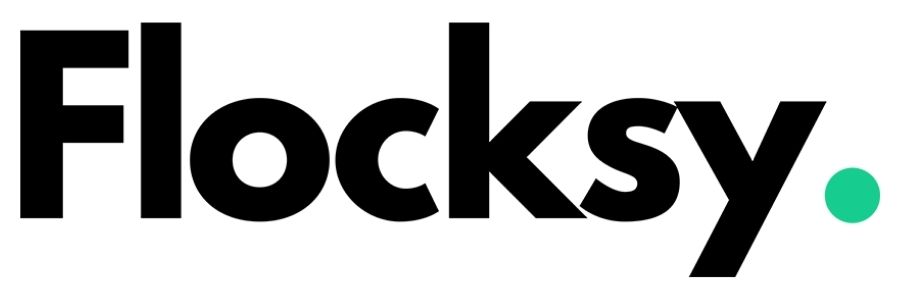
How does Flocksy / unlimited graphic design work?
Unlimited graphic design services are an alternative solution for those who need design help but do not need a full design team. They all have similar promises:
- 24-48 turnaround time
- Flat monthly rate
- Dedicated designers
- Money back guarantee
- Lower cost than hiring an in-house designer
Who is Flocksy good for?
The unlimited creative business model that Flocksy provides is good for both big and small businesses. Some of these include:
- Corporations in need of consistent blog content
- Influencers and bloggers in need of social media design, thumbnails, and descriptions
- Marketers who need press releases written
- Entrepreneurs in need of a new website
- Small businesses in need of advertising designs
Brands that use Flocksy
On Flocksy’s website, they mention that they’ve worked with over 1000 brands including Harley Davidson, State Farm, and Forbes.

Their portfolio also shows projects that they’ve completed for other clients. There are t-shirt designs, marketing materials, copywriting examples, videos, and web development done for both large and small organizations. This gives you a good idea of what kind of project you can request.
Flocksy pricing
Flocksy has two options for pricing. $995/month for the All Access Plan and $420/month for the Team Plan.

Flocksy review
What I like about Flocksy:
- Manage your projects on their Project Management board
- They have a custom team created for you on your dashboard
- Project manager who manages all my projects
- Image tagging to give revision notes
- All services included in pricing
- Support through email, chat, and phone
What I don’t like about Flocksy:
- Offshore team may be difficult to communicate with without the project manager
- Adjusting to designer and writer skillsets
Flocksy alternatives
You may like
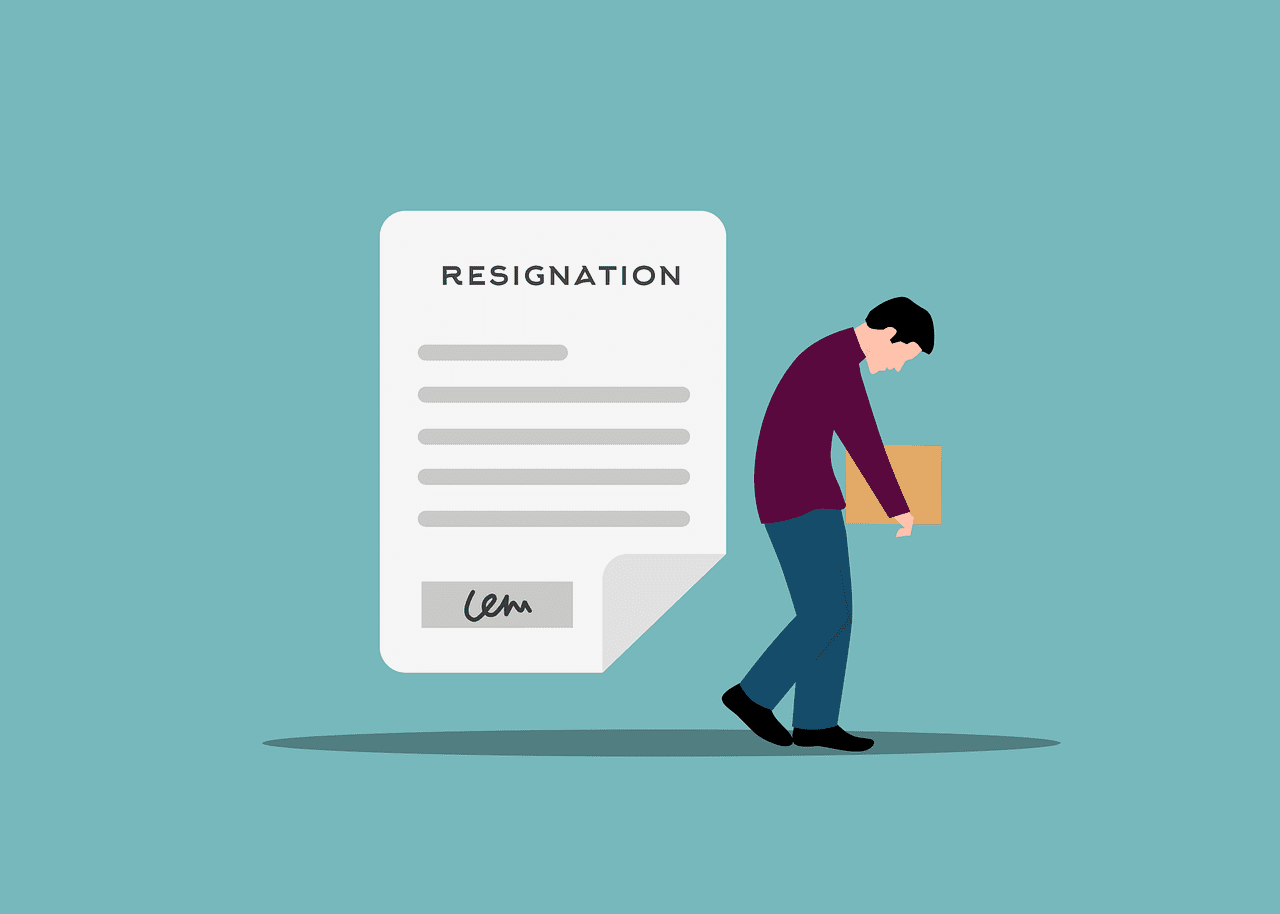
Why Cutting People Isn’t Always the Answer
When companies face money problems, many quickly cut jobs. In fact, a 2025 Deloitte report showed that 84% of businesses make layoffs their first move during tough times. But is that always the best choice? Not for Sarah Jennings.
Sarah is the CEO of BrightWave Digital, a marketing agency with 42 employees. Earlier this year, her company was in serious trouble. Revenue had dropped by nearly half in just six months. Costs were rising, and her advisors told her to start laying people off.
Sarah refused.
She believed her employees were the core of her business. Instead of cutting jobs, she looked closely at where the money was going. What she found was eye-opening—and it changed everything for her company.
Where Was the Money Going?
Sarah began by examining all expenses. She wanted to know exactly where the company’s money went every month. Three areas stood up immediately:
- Graphic design costs $18,000 per month.
- Marketing initiatives cost $12,000 per month.
- Landing page development costs $9,500 per month.
Together, these costs made up over 65% of her company’s spending. If she didn’t act fast, she would run out of options within months. Sarah shared, “I realized that our biggest costs weren’t staff salaries they were the tools and services we used to get work done. That gave me hope. Maybe we could fix this without losing anyone.”
Step 1: Saving on Graphic Design using Penji
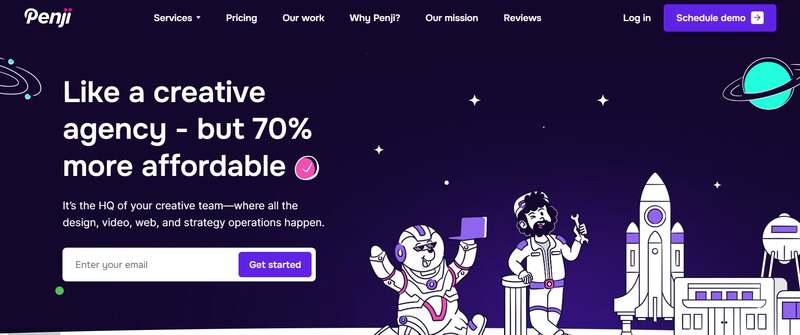
BrightWave invested extensively on in-house designers and freelancers. The job was satisfactory, but the costs were uncertain. Last-minute client requests could sometimes cause monthly design expenses to quadruple.
Sarah chose Penji, a flat-rate design service that starts at $499 per month. Penji gave her team access to a dedicated group of designers who could handle everything from social media graphics to presentation decks. There were no extra fees, no per-project charges just one fixed monthly cost.
The impact:
- Monthly design expenses dropped from $18,000 to $4,500
- Turnaround time went from 5 days to 1–2 days
- Designs became more consistent across all client projects
Sarah explained, “Penji made our design work predictable. We always knew how much we’d pay, and we completed more tasks faster.”
Tip for business owners: If your design needs vary from month to month, a flat-rate service can save you money and time. To maximize the value of your investment, keep track of how it is used.
Pros: Consistent pricing, quick delivery, and unlimited orders.
Cons: Prioritizes online work over in-person creative collaborations.
Step 2: Automate Ads with Adaptify
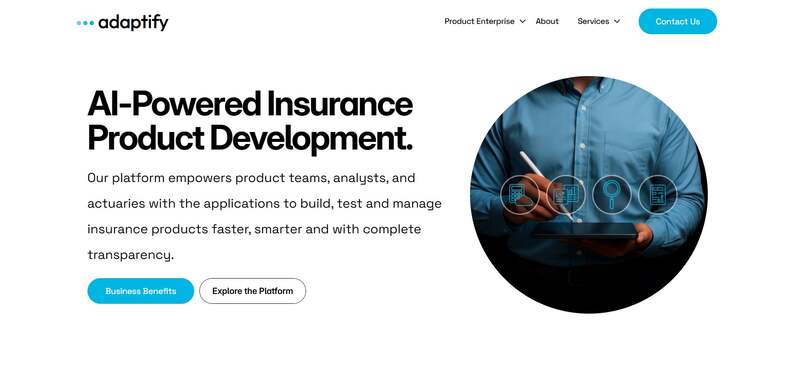
Manually managing advertising campaigns was another significant challenge. Her team spent endless hours testing advertisements, adjusting budgets, and forecasting what would work. Mistakes were costly and often ignored until it was too late.
Sarah opted for Adaptify, a $299 monthly AI service that optimizes ads. Adaptify automatically adjusted bids, targeted the right clients, and cycled the most effective creatives. It worked around the clock, which her crew couldn’t equal.
The outcomes were:
- Ad spend fell by 35%
- ROI on campaigns went up by 28%
- Her marketing team had more time to focus on creative strategy instead of routine tasks
Sarah said, “Adaptify did the work of three specialists. It repaid itself almost instantly.”
Tip for business owners: Consider automating time-consuming jobs. AI technologies cannot replace creativity, but they can eliminate tedious tasks that sap your staff.
Pros: Reduces costs, improves outcomes, and frees up staff time.
Cons: Setup and monitoring are required initially.
Step 3: Use Flowpages to build speedier landing pages
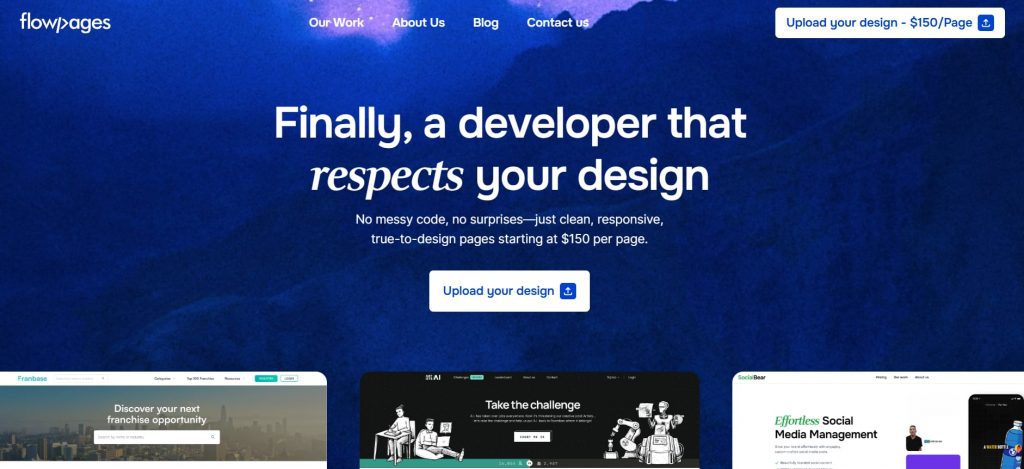
BrightWave relies on external developers to create landing pages. Each page cost between $800 and $1000 and took several weeks to finish. This hampered campaigns and annoyed clients.
Sarah adopted Flowpages, a drag-and-drop landing page builder costing $79 a month. Her in-house marketers could now create pages themselves in just a few hours.
The impact:
- Page costs dropped by 90%
- Campaigns launched four times faster
- Clients reported faster reaction times and better outcomes
Sarah went on: “Flowpages reduced one of our largest bottlenecks. We can respond to client requests rapidly, rather than waiting weeks for a page to be produced.”
Tip for business owners: Speed is crucial. Faster launches can boost customer satisfaction and income.
Pros: Affordable, easy to use, fast.
Cons: Limited options for highly complex, custom pages.
The Big Picture: 70% Cost Savings, No Layoffs
After six months of using these tools, BrightWave’s results were clear:
- Design costs: down 75%
- Ad costs: down 65%
- Landing page costs: down 90%
Overall, the company cut operating costs by 70%. All 42 employees kept their jobs. By the third quarter of 2025, profitability had returned, and the company had even secured additional contracts as a result of its speedier, more efficient operations.
Sarah summed it up: “Technology allowed us to minimize costs without reducing staff. “We are stronger now than we were before.”
What Can You Learn?
Sarah’s method can be applied to other businesses as well. Here’s how to start:
- Look at your biggest costs first. Check where your money really goes each month.
- Use fixed-cost services. Tools like Penji make your budget predictable and scalable.
- Automate where possible. Platforms like Adaptify save time and deliver better ROI.
- Empower your team. Tools like Flowpages let your people do more without extra costs.
- Review regularly. Sarah didn’t only make changes; she also tracked outcomes to stay on target.
Cutting costs does not have to imply cutting people. With the appropriate tools and a clear strategy, you can save money, retain your workforce, and develop a better firm for the future.
Want to hear more stories like this? OwnersMag provides ideas and strategies for business owners.
Business
7 Effective Ways to Improve at Networking and Grow Your Brand
Published
1 week agoon
August 19, 2025
Believe it or not, networking works. If you want to grow your business, you need to connect with people and apply networking tips – whether in face-to-face meetings, hybrid events, or online meetings. And when you want networking to work for you, you must be pushy and assertive but polite.
Read here to know the ways to improve at networking:
1. Identify Your Goals

The first thing you need to do is to determine what you want to get out of the task. Ask yourself, what am I looking for? Once you understand your goals and objectives, it’s easier to identify which events to go to. This way, you can find which ones are better aligned with your business to get more productive results. This will also assure you that your efforts won’t go to waste.
2. Research the Events
Once you determine your goals and line up a few events to go to, do a bit of research. Try to get as much data about them as possible. It is also highly recommended that you get to know the people attending these events. If you see a company you’re interested in, you should find out more about it before going.
In 2025, research isn’t limited to physical events. Many networking opportunities now happen online or in hybrid formats. Before joining, check if the event has a digital platform or app where you can view the agenda, profiles of attendees, and discussion threads. Preparing your LinkedIn profile or digital business card in advance will make it easier to connect with others, even virtually. Taking the time to engage in pre-event online conversations or forums can also help you stand out and build rapport before you meet people in person.
3. Wear the Appropriate Clothing

They say, “dress to impress,” and this rings true when attending networking events. Choose clothes that will make you feel comfortable while suitably dressed for the occasion. You can wear bright-colored clothes for a casual event and be the ice-breaker. Or add an accessory that can be a conversation starter. This way, socializing becomes more effortless and you will get more people to network with.
One of the ways to improve at networking in terms of fashion is to focus not just on formality, but on authenticity and sustainability. Many professionals now prefer smart-casual looks that reflect their personal brand while also considering eco-friendly or minimalist fashion choices.
For hybrid or online events, remember that your on-screen presence matters too: choose solid colors that look good on camera, avoid overly busy patterns, and ensure good lighting. Dressing in a way that aligns with your values and professional identity will make you more memorable in both physical and virtual spaces.
4. Practice Makes Perfect
It pays to rehearse what you’ll say to people about your company. You can stand in front of a mirror and practice your pitch so you won’t have to forget an important detail. Remember to include your achievements to make them see how your business will help them improve theirs. A little bit of humble brag will go a long way.
5. Create a Killer Business Card

There will be exchanges of business cards at these events, so make sure that yours will stand out. There are many websites you can go to where you can design your own. Ensure that all pertinent data is on it, so people aren’t left hanging. In addition, make sure that your design will grab attention and won’t have the card end up in the trash bin.
These days, business cards aren’t just physical, but digital too. Many professionals now use QR codes, NFC-enabled cards, or LinkedIn QR sharing to exchange details instantly. Having a sleek digital business card or profile ready ensures you’re remembered even after the event ends. For in-person events, a thoughtfully designed physical card still makes an impression, but pairing it with a scannable digital version gives your contacts more ways to connect. This hybrid approach prevents your information from being lost and makes follow-ups easier.
6. Be Prepared
Also included in the best ways to improve at networking is to set yourself at ease and relax, especially if it’s going to be a long event. Get your socializing skills warmed up by getting a drink, if applicable. This can also set the mood for the event to help you start talking to people. Once you get the conversation going, you should engage in active listening.
As much as you want people to absorb what you’re saying, you should do the same. Allot a time for each person you talk to and stick to that time. Then, excuse yourself politely to start conversing with other people. Hand over your business card and move on to the next prospect.
Don’t worry about offending people; many networking event attendees understand the transactional nature of them. Give them a promise to follow up and end the conversation.
7. Follow the Best Practices
After you go to one event, analyze your moves and try to make a pattern of what worked. This can help you avoid mistakes such as wasting your time with one company and other similar situations. Also, think of the best lines that will quickly convey your message. Think of networking as speed dating, so arm yourself with the best pickup lines.
In 2025, best practices go beyond clever one-liners. Many networking platforms now use AI-powered apps that track who you’ve met, remind you to follow up, and even suggest conversation starters. After events—whether in-person or virtual—take time to review not just who you spoke with but also how you engaged online, such as LinkedIn comments, virtual chatrooms, or community follow-ups.
One of the most important ways to improve at networking is to focus on building authentic, long-term connections rather than just rapid-fire introductions. Documenting key insights digitally will help you refine your approach for the next event and create a more intentional networking strategy.
Business
Fiverr vs Penji vs Canva: Who Comes Out on Top for Creatives?
Published
2 weeks agoon
August 15, 2025By
Skylar Lee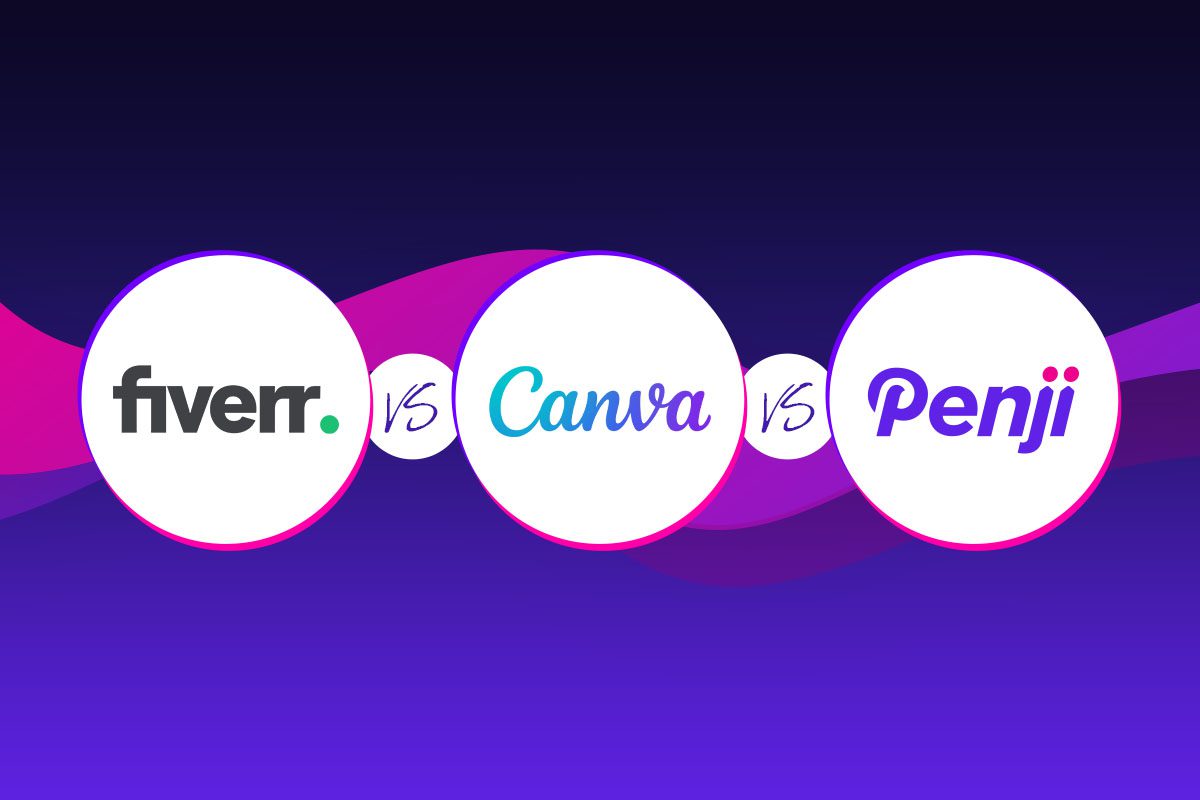
Fiverr vs Canva vs Penji – which one should you choose?
Strong graphic design is no longer optional—it’s essential for standing out in today’s competitive market. Skimping on design could mean losing ground to competitors who are investing in high-quality visuals.
The good news? Accessing professional design has never been easier. From hiring skilled freelancers to creating your own designs or using subscription-based services, the options are vast. In this post, we’ll compare Fiverr vs Penji vs Canva, highlighting the leading choice in each category so you can find the best fit for your brand’s needs.
Companies Overview
Let’s start our Fiverr vs Canva vs Penji review with a brief introduction to each company.
Fiverr
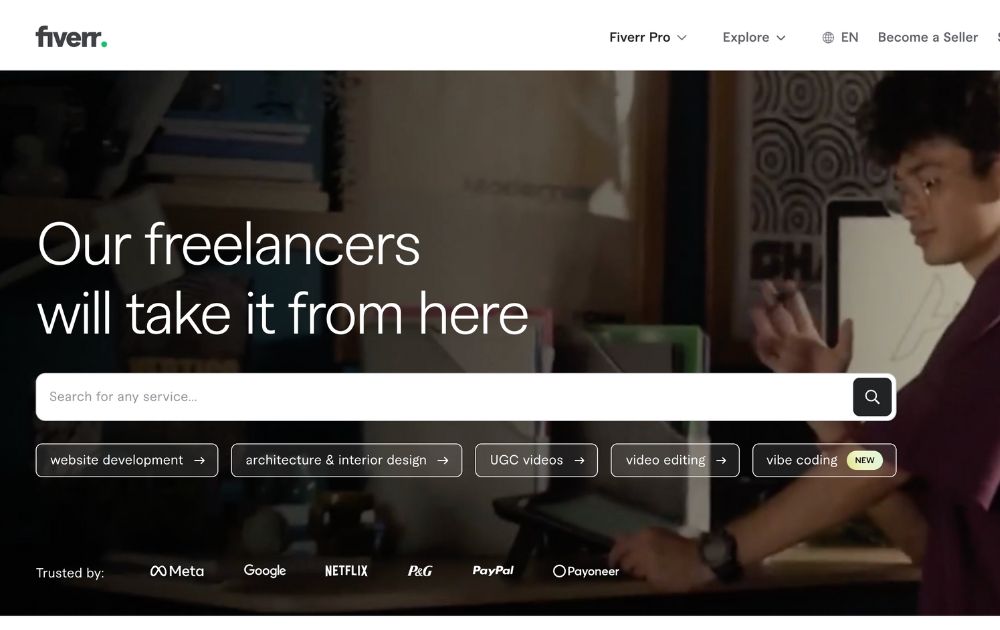
Fiverr is a freelance gig platform for hiring remote workers, like web developers, podcast editors, video editors, and many more. Graphic designers are also available to hire on Fiverr with a wide scope of services. On Fiverr, you can browse various design styles to find the right designer for your project.
Penji
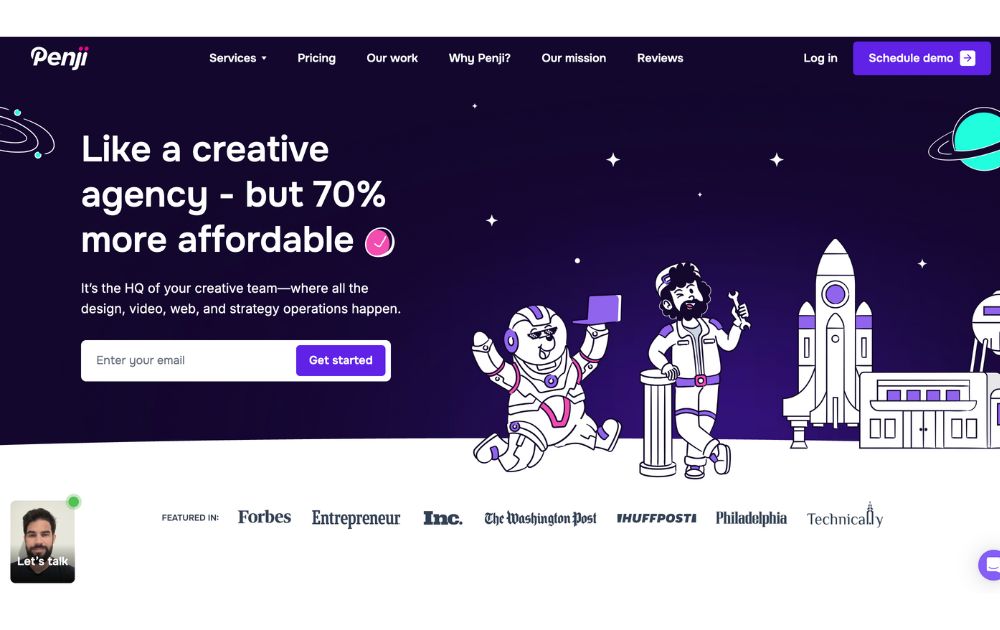
One of the highest-rated design services, Penji is a subscription-based graphic design service. You can subscribe and request as many designs projects as you want on a rolling basis. With Penji, you get access to 120+ design types, including web and app designs, presentation designs, motion designs, and illustrations. Plus access to art directors or project managers depending on what tier you choose.
Canva
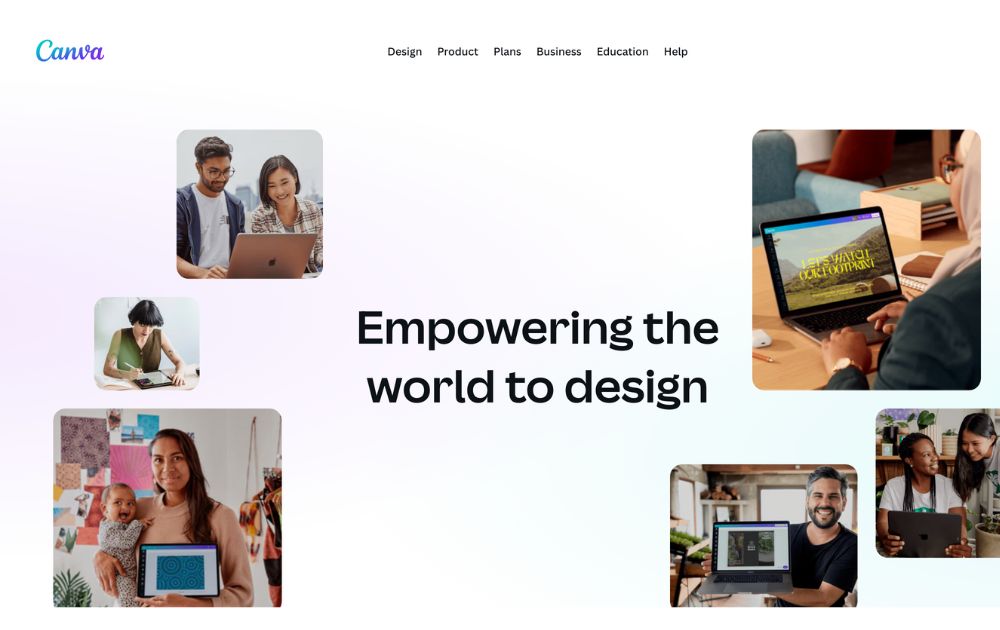
Canva is a do-it-yourself graphic design application that will help you design anything related to your business. You don’t need graphic design experience to use Canva. They offer templates to help you get started with designs like YouTube thumbnails or ads. Plus, you can edit those templates based on your unique branding.
Fiverr vs Canva vs Penji Features
Next in our Fiverr vs Canva vs Penji showdown, let’s check out the features of each to see which one reigns supreme.
Fiverr
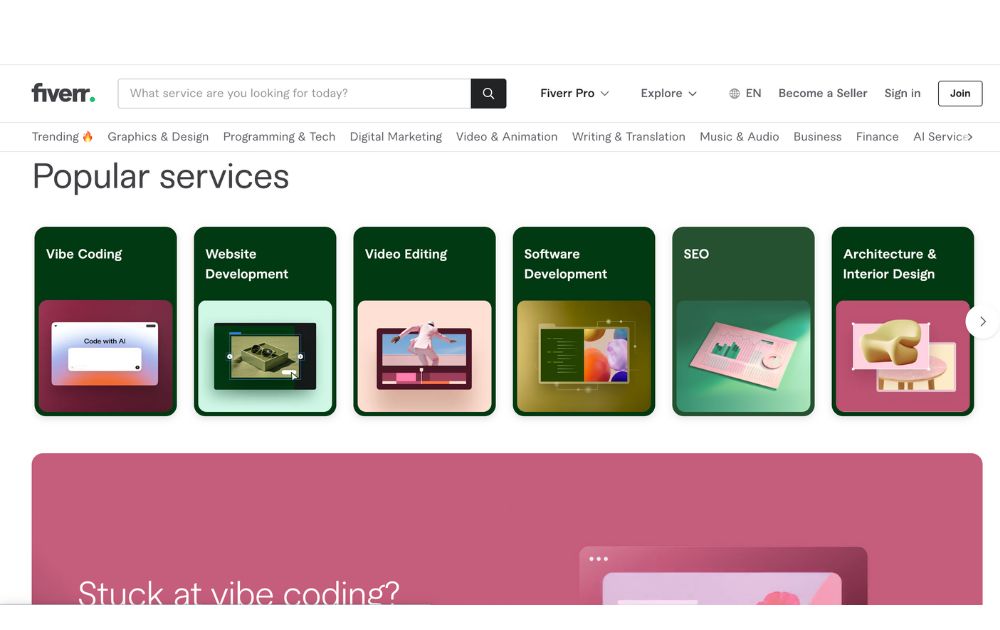
Fiverr provides businesses with two ways to find freelancers. First, you can find them using the search bar. Type “graphic designer” and find available designers to collaborate with. You can narrow your search by finding designers based on your design needs. For instance, you can browse “logo designers” instead of graphic designers.
As you select graphic designers, you can see that designers offer various plans depending on your design project. Plus, they indicate the following:
- Number of designs they can create
- Number of revisions
- Turnaround time
Plus, you can also find reviews from previous clients to know their working experience with one of your top choices.
The other way to find freelancers is the Fiverr Enterprise platform. Fiverr specialists will help you find the best graphic designers, creatives, and other employees for your team. Plus, the platform includes onboarding, management, payment, and compliance.
Penji
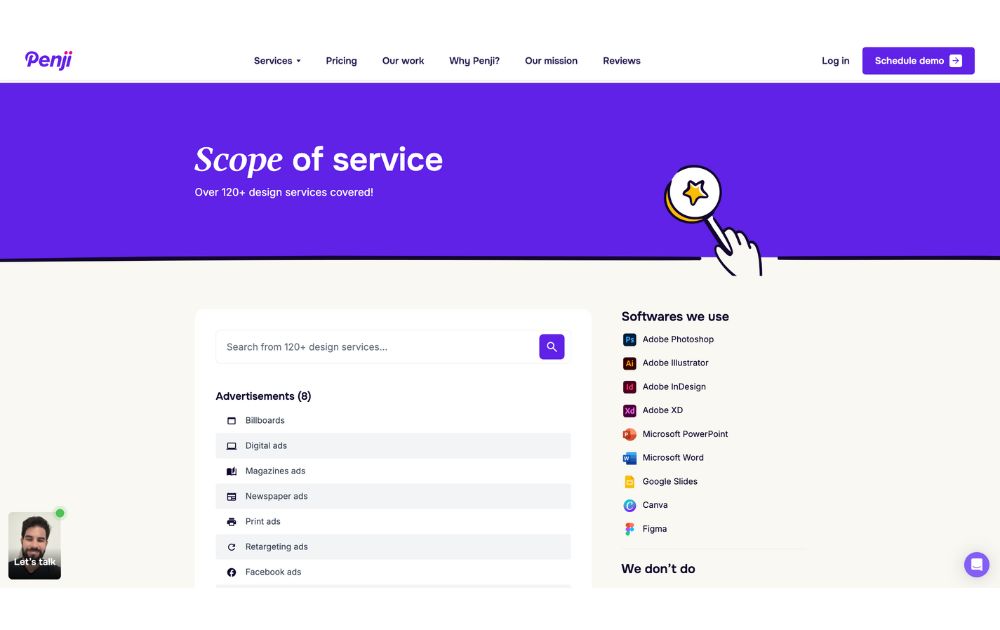
Penji has many features to get you started, from submitting your first request to chatting directly with your designers. You simply click “Create” in the top right corner of the dashboard, submit your design brief, and get matched with the appropriate designer right away.
Here’s what to expect when subscribed to Penji:
- Request 120+ designs
- Get matched with the best designer for your project
- Swap designers if needed
- Manage multiple brands
- Point and click revisions
- Team collaboration
- Designer chat window
- Real-time updates
Canva
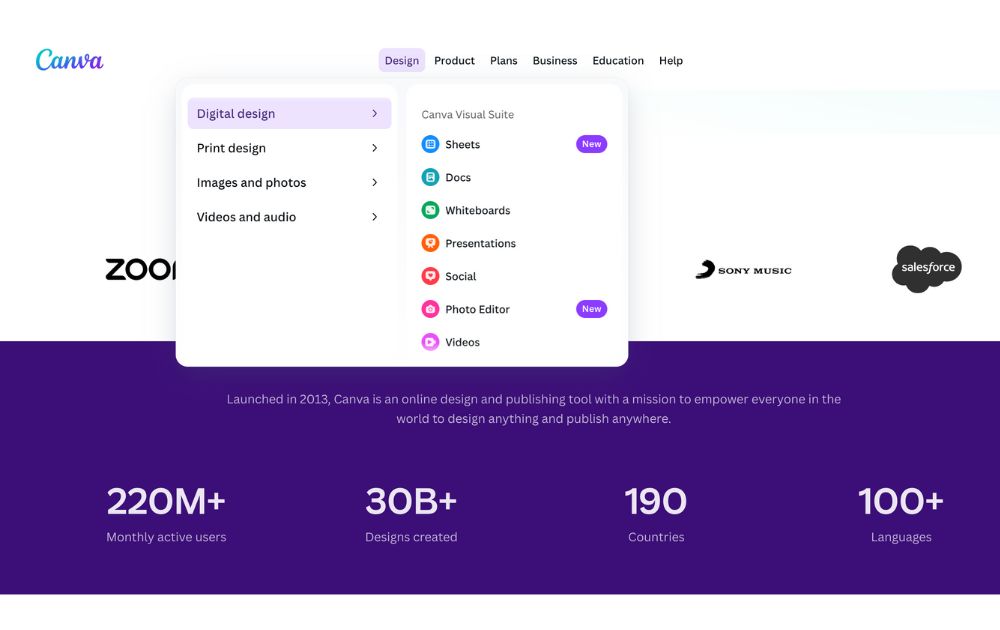
Meanwhile, Canva is a software loaded with many intuitive features to help you design your own projects. Features depend on the plan you choose. However, here are the basics:
- Drag-and-drop editor
- Access to 1 million templates, 3 million photos and videos, and thousands of design types
- AI-generated designs
- Printing and delivery
However, if you need more than that, you can access the following on the paid plans:
- Resize and translate designs
- Brand kits
- Remove backgrounds
- 1TB of cloud storage
- 24/7 customer support
Turnaround Time
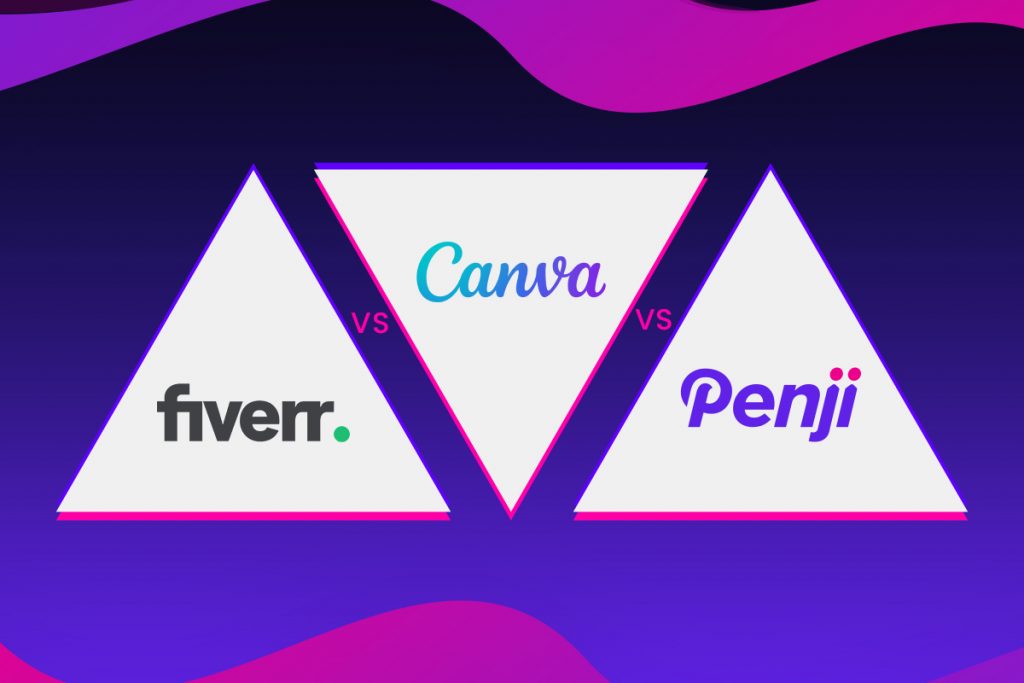
Turnaround time for Fiverr freelancers depends heavily on the graphic designer. They will indicate how long the delivery date would be. Some designers are quick (1-2 days), while others will take weeks for more involved projects.
Penji guarantees a 1 to 2-day turnaround time on most designs. If you’re subscribed to the Agency plan, they can even ensure same-day turnaround. However, complex projects like web or app designs will take longer.
Of course, if you’re using Canva, turnaround time is simply however long the project takes you! Again, this can vary depending on your design skills and whether or not you find the design elements you’re looking for.
Fiverr vs Canva vs Penji Pricing
Fiverr pricing depends on what designs you need. But as the name suggests, Fiverr refers to the $5 starting point that freelancers can charge clients with when working with them. However, there’s always the risk of poor quality. It’s best to vet each designer carefully and choose something reasonably priced.
Penji’s pricing is simple because you pay a flat monthly rate for all design work. Here are the pricing options depending on what tier of service you choose:
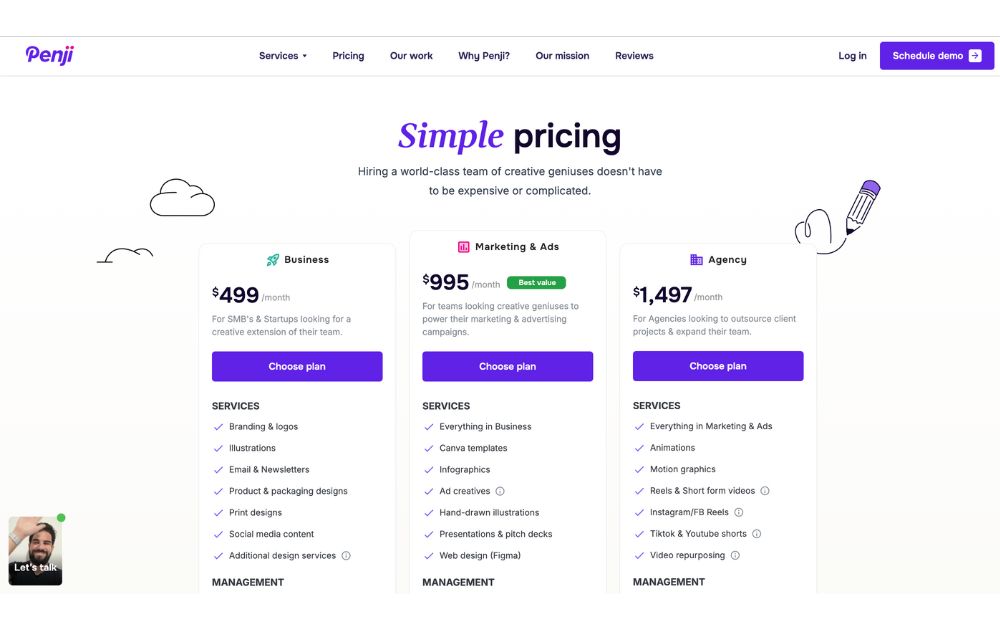
Lastly, Canva has three pricing tiers, depending on your needs and budget.
- Canva – Free
- Canva Pro – $15/mo
- Canva for Teams – $10/mo (minimum 3 users)
Design Work and Production
Next, let’s see Fiverr vs Canva vs Penji in terms of design work and production.
Design work by Fiverr freelancers varies from experience level to design specialties. Many Fiverr freelancers produce decent work for clients, considering the rates they charge. However, not all design work from Fiverr is 100% the best. Considering Fiverr is the best for short-term work, expect one or a few design variations for a project.
For Canva, we can use templates as the point of comparison for design work. Thousands of creators submit their templates to the graphic design software. Many templates look the same because it is the trend or looks modern. Regardless, Canva templates look decent to use as the base design for your brand. However, you need to modify it to your brand to avoid using similar templates from competitors or other brands.
Finally, Penji produces highly custom designs for clients. Because the price point is a bit higher, their design team can take the time to ensure you get the exact version of what you’re looking for. Penji isn’t a freelance platform, so you may get the chance to work with the same designers again and again (especially if you prefer their work).
Competitor Analysis
One fair comparison to make is between Fiverr and Penji since both deal with actual designers and their work. Here are a couple of comparison points for these two services to help you narrow your options further.
- Design variations – Fiverr freelancers can create a few variations. Meanwhile, Penji designers can produce multiple variations since you can switch between designers.
- Work volume – Fiverr designers can produce a limited number of designs, depending on plan inclusions. Ideally, they’re a good option for one-off projects. However, Penji can produce more than 10+ designs, especially if you have a monthly volume of designs.
- Comfort – Penji allows you to sit back and run your company since it’s an extension of your team. Meanwhile, you need to browse and interview freelancers on Fiverr. Plus, you have to worry about payment and management.
But if we were to put Canva back into the equation, Canva has the upper hand in pricing. Plus, if you’re creative enough, you can produce great brand designs without the help of designers.
Final Thoughts
Graphic design work can be done and delivered in three main ways: doing it yourself, hiring a freelancer, or subscribing to a graphic design service.
As we’ve seen in this three-way Fiverr vs Canva vs Penji showdown, each has its strengths and weaknesses. The three services have different models, which could benefit users or subscribers in getting their designs. It’s up to you which is the best design service for your situation. Good luck!

Top 10 VPNs 2022 to Consider

How a CEO Refused Layoffs and Still Cut Costs by 70%

7 Effective Ways to Improve at Networking and Grow Your Brand

Meta Sphere AI: New AI Knowledge Tool Based on Open Web Content

Prowly Review: Boost Your Media Relations with Ease

Fiverr vs Penji vs Canva: Who Comes Out on Top for Creatives?

5 Highest Rated Design Services Used by Big Brands & Agencies

Prowly Review: Boost Your Media Relations with Ease

5 Highest Rated Design Services Used by Big Brands & Agencies

Fiverr vs Penji vs Canva: Who Comes Out on Top for Creatives?

Top 10 VPNs 2022 to Consider

7 Effective Ways to Improve at Networking and Grow Your Brand

Meta Sphere AI: New AI Knowledge Tool Based on Open Web Content


